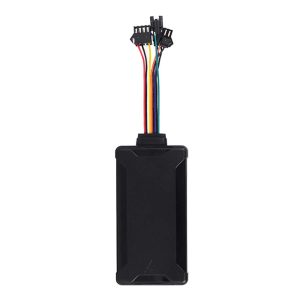
Keeping control of speed isn’t just about following the rules — it’s about saving lives, protecting your business, and making sure every truck makes it home safely. Across Canada, fleet operators like me face real challenges. From slippery highways in Alberta to the tight delivery windows in Toronto, managing vehicle speed has never been more important.
If you’re in the trucking industry or manage commercial fleets, you already know how speed impacts everything — fuel costs, insurance premiums, driver safety, and customer satisfaction. That’s why so many of us are turning to modern, tech-powered solutions that help keep things in check. For those looking to implement reliable and scalable solutions, there are industry-leading options in speed control for trucks and fleets in Canada that ensure compliance while improving road safety.
Let’s dig into the most effective options out there — what works, why it works, and how to choose what’s best for your operation.
Why Speed Control Matters in Canadian Fleets
Speed isn’t just a number on the dashboard — it’s a business variable. When drivers go too fast, the risks go up. More wear and tear on vehicles, more fuel burned, and worst of all, higher chances of accidents. In Canada, where weather can change in a heartbeat and road conditions vary from province to province, this becomes even more serious.
Speed control also ties into legal compliance. Several provinces are already enforcing or exploring mandatory electronic speed limiters for heavy-duty vehicles. Not keeping up can lead to fines, penalties, or even the loss of your operating license.
But beyond regulations, there’s a bigger picture: safety culture. Companies with solid speed control practices often see better driver retention, fewer collisions, and a stronger reputation in the industry.
Key Challenges Faced by Fleet Operators
We all know it’s easier said than done. Here are some everyday problems that make speed control tough:
- Driver inconsistency: Some drivers follow speed rules. Others don’t.
- Geographical diversity: A fleet driving through BC’s mountains faces different speed demands than one in the Prairies.
- Technology gaps: Not all fleets are equipped with modern telematics or control systems.
- Cross-border operations: Regulations shift once you cross into the U.S., creating compliance confusion.
Fleet managers need tools that not only limit speed but also adapt to the complex realities of Canadian logistics.
Top Speed Control Solutions Available in Canada
Let’s explore the best tools on the market — the ones proven to work in real-world Canadian conditions.
1. Electronic Speed Limiters (ESLs)
These are physical or software-based devices installed in the vehicle’s engine control unit (ECU) to cap maximum speed. They’re mandatory in Ontario and Quebec for large trucks, and other provinces are likely to follow.
- Benefits: Can’t be easily bypassed, ensure consistent compliance.
- Limitations: Not adjustable for specific zones or driver behavior.
Great for fleets that want a “set-it-and-forget-it” solution.
2. Telematics-Based Speed Monitoring Systems
Telematics systems combine GPS tracking with real-time analytics. They don’t just record vehicle speed — they analyze it against local speed limits, weather conditions, and traffic.
- Real-time alerts to managers and drivers.
- Driver scorecards that measure and report speeding events.
- Data dashboards to spot trends and take action.
This is perfect if you want to blend compliance with driver accountability.
3. Adaptive Cruise Control & GPS-Limited Systems
These use GPS data to set max speeds for different regions or road types. Some systems can lower the speed automatically in school zones or construction areas.
- Smart technology that adjusts based on location.
- Weather and terrain aware with AI-based learning.
- Ideal for long-haul routes crossing provinces or borders.
These solutions reduce the burden on drivers and enhance automation.
4. Driver Behavior Management Tools
These tools go beyond speed control. They track harsh braking, cornering, idling, and acceleration — creating a full picture of how a driver handles the vehicle.
- Coaching tools built into driver apps.
- Gamification elements to encourage safer driving habits.
- Driver reports are shared weekly to promote improvement.
Speeding is rarely an isolated behavior. Managing the whole picture improves safety and efficiency.
How to Choose the Right Solution for Your Fleet
The best solution depends on what kind of fleet you run. A few questions to ask:
- How big is your fleet? Larger fleets may need more scalable software.
- Do you operate across provinces? GPS-aware tools help with variable speed zones.
- What’s your tech stack? Some systems integrate easily with existing dispatch and FMS platforms.
- What’s your budget? There are affordable plug-and-play options and premium enterprise solutions.
Also, consider vendor support, updates, and data security — especially with cloud-connected tools.
Case Studies: Canadian Fleets That Got Results
Let’s take a quick look at how speed control tools made a difference:
- Mid-sized carrier in Ontario installed ESLs across its fleet. Result? A 40% drop in speeding violations and fewer insurance claims.
- Cold-chain logistics company in Alberta used telematics to identify drivers who consistently sped in urban zones. After three months of coaching, incidents dropped by half.
- BC-based long-haul fleet added GPS-limited systems. Fuel use dropped by 8%, and maintenance costs went down due to less aggressive driving.
These are real numbers — and they show what’s possible when speed control meets strategy.
Compliance & Legal Requirements in Canada
Rules are tightening fast. Here’s what to know:
- Ontario & Quebec mandate speed limiters on most large trucks — max speed capped at 105 km/h.
- Federal updates from Transport Canada are under review, which may lead to national policies.
- Insurance providers may offer lower premiums for fleets using speed management tools.
Don’t wait for the fine — being proactive saves money and stress.
Final Thoughts: Speed Control Is Smart Business
Speeding might seem like a small thing, but in fleet management, it adds up fast — in fuel, in safety, in costs, and in risk. The best speed control solutions don’t just stop trucks from going too fast. They help build a culture of safety, trust, and professionalism.
Whether you’re a small local delivery company or a nationwide logistics firm, now’s the time to put speed in its place — under control.
FAQs
What is the legal speed limit for trucks in Canada?
In most provinces, the max speed is 100–110 km/h, but trucks may be limited to 105 km/h if governed.
Are speed limiters mandatory?
Yes, in Ontario and Quebec for trucks over 11,794 kg. Other provinces are reviewing similar rules.
Can I monitor driver speed remotely?
Yes, with telematics or GPS tracking systems.
What’s the best option for long-haul fleets?
GPS-limited systems and adaptive cruise controls work best for changing routes.
Do insurers give discounts for using speed control?
Many do, especially if you can show consistent data over time.








